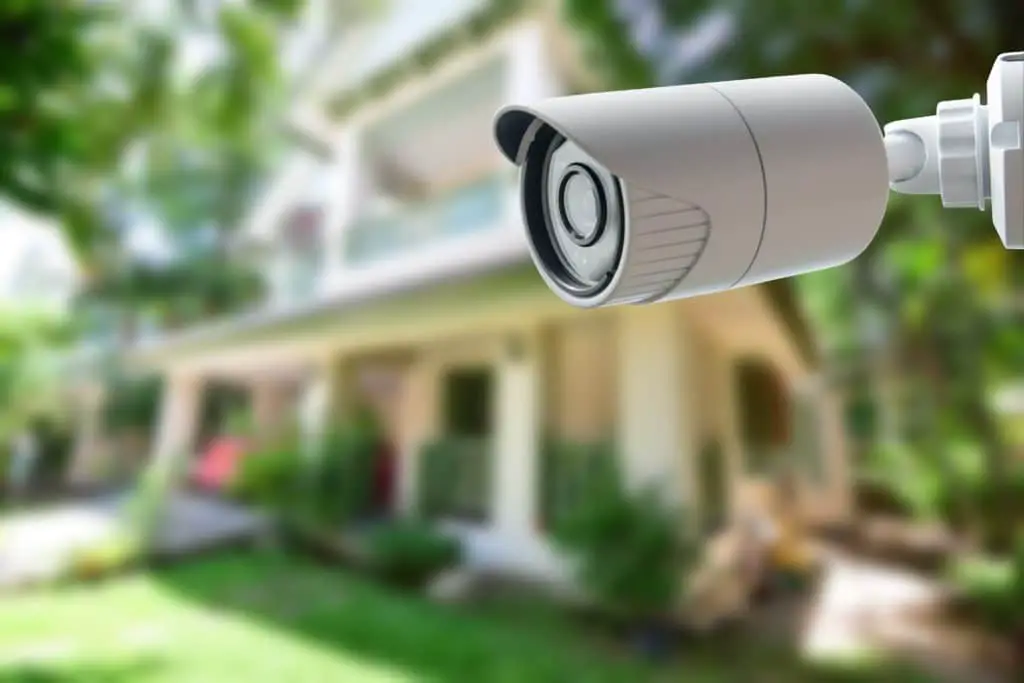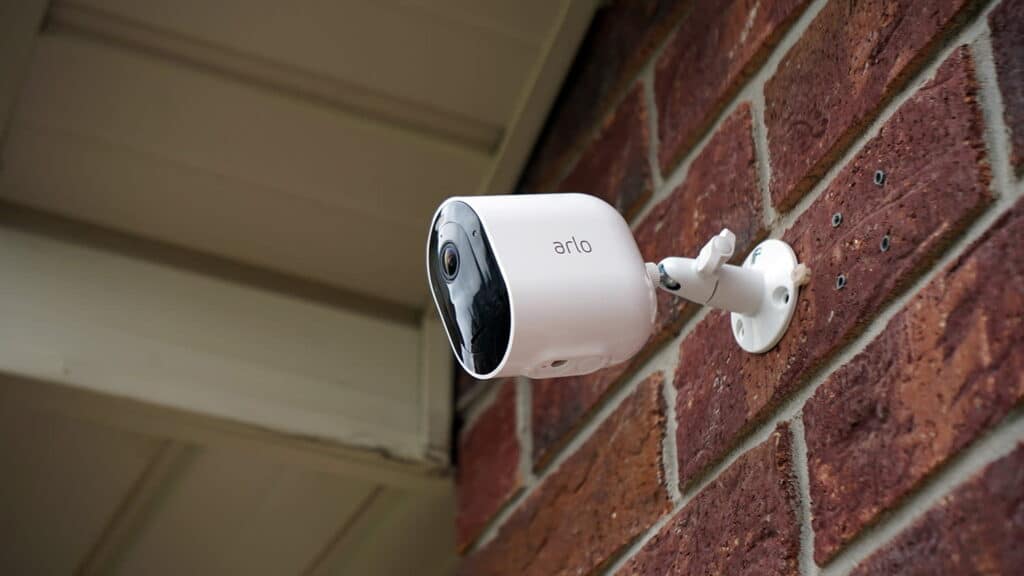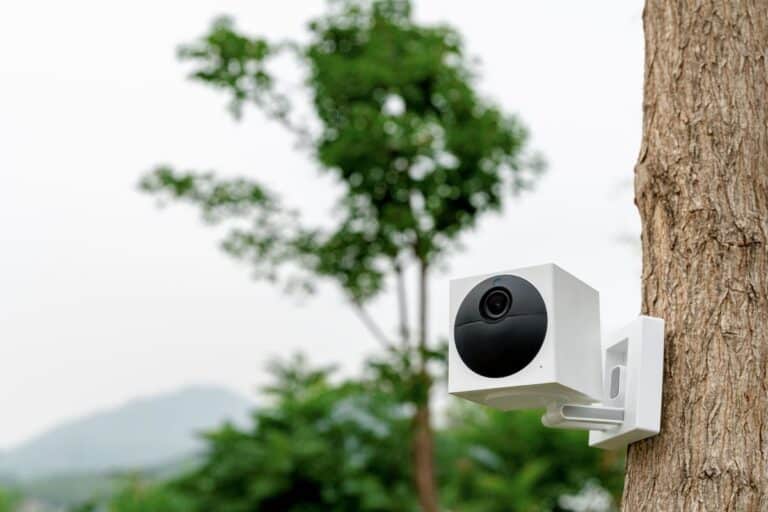Introduction
How Many Outdoor Cameras Do I Need: These cameras play a crucial role in deterring potential intruders, monitoring outdoor activities, and providing valuable evidence in case of any incidents. However, determining the number of outdoor cameras needed for comprehensive coverage can be a daunting task.
Several factors, including as the size of the property, the layout of the premises, special security concerns, and individual preferences, influence the question of how many outside cameras are necessary. Each property has its unique requirements, and finding the right balance between surveillance and practicality is key.
We will explore the various considerations involved in determining the optimal number of outdoor cameras for your needs. We will delve into the factors that influence camera placement, coverage area, camera types, and the overall goals you have for your security system. In light of these considerations, you’ll be in a stronger position to determine the optimal number of outdoor cameras necessary to protect your home or business.
Whether you are a homeowner looking to protect your residence, a business owner safeguarding your premises, or simply someone concerned about maintaining a secure outdoor environment, this guide will provide valuable insights to help you assess your security needs and choose the appropriate number of outdoor cameras.

How many cameras should you have outside your house?
For a home video surveillance system, most people need between 2 and 6 security cameras. If it’s for a business, you may need anywhere from 16 to 64 cameras, depending on the size of your property.
Property Size and Layout: The size and layout of your property are significant factors in determining the number of outdoor cameras needed. Larger properties generally require more cameras to ensure comprehensive coverage. Take into account the number of entry points, such as doors, windows, and gates, that need surveillance. Consider any blind spots or vulnerable areas that require additional monitoring. It’s important to strategically position cameras to cover these key areas effectively.
Coverage Area: Identify the areas you want to monitor outside your house. This may include the front yard, backyard, driveway, patio, or any other outdoor spaces. Each area requiring surveillance will need a dedicated camera. Consider the field of view and range of the cameras you choose, as these specifications will determine the coverage area. Wide-angle lenses or pan-tilt-zoom cameras can cover larger areas, reducing the number of cameras needed.
Security Concerns: Assess your specific security concerns and the level of surveillance required. Are you mainly concerned about potential break-ins, vandalism, or package theft? Understanding your security priorities will help you allocate cameras accordingly. For instance, if you live in a high-crime area, you may want to install cameras with night vision capabilities or motion sensors in strategic locations to capture any suspicious activity.
Budget and Cost: Your budget plays a significant role in determining the number of outdoor cameras you can afford. Keep in mind that the cost of cameras, installation, and ongoing maintenance should be factored in. While it may be tempting to install numerous cameras for extensive coverage, it’s important to strike a balance between your security needs and budget limitations.
Do I really need an outdoor camera?
In cases of intrusion or vandalism, the footage can also serve as important evidence. It can help you and the authorities identify perpetrators. Aside from keeping security, outdoor cameras also help you check in on family and pets. You’ll be able to keep an eye on kids or pets who might be playing outside.
Deterrence and Prevention: One of the primary benefits of outdoor cameras is their deterrent effect. The mere presence of visible cameras can discourage potential intruders from targeting your home. Since law enforcement may use camera footage, criminals are less inclined to risk getting caught. Installing external cameras deters burglaries and other crimes.
Visual Evidence: In the unfortunate event of a security breach or incident, outdoor cameras provide valuable visual evidence. They capture real-time footage of any suspicious or criminal activities occurring around your property. This evidence can be instrumental in identifying perpetrators, aiding in investigations, and increasing the chances of recovery for stolen items. Outdoor cameras offer an extra layer of protection by providing you with vital information that can be shared with law enforcement and insurance companies.
Monitoring and Remote Access: Outdoor cameras equipped with modern technology offer the convenience of remote monitoring. With internet connectivity and mobile apps, you can access the camera feed from anywhere, using your smartphone, tablet, or computer. This allows you to keep an eye on your property while you’re away, providing peace of mind. Whether you’re at work, on vacation, or simply out running errands, you can check the camera feed in real-time or review recorded footage to ensure the safety of your home.
What is the range of outdoor camera?
Generally speaking, security cameras have a range of anywhere between 10 and 70ft during the day. Alternatively, some night-vision security cameras have a range of 100-200ft! There are many features that can affect and impact your security camera’s vision range, such as: Focal length.
Lens Size and Field of View: The lens size and field of view are key factors that influence the range of an outdoor camera. Cameras with larger lenses generally have a greater focal length, allowing them to capture clear images and video over longer distances. The field of view determines how wide an area the camera can cover. Cameras with a wide-angle lens can cover a broader area but may sacrifice the ability to capture detailed images at longer distances.
Resolution and Image Quality: The resolution of an outdoor camera plays a vital role in determining its range. Higher resolution cameras, such as those with 1080p or 4K capabilities, can capture more detail and provide better image quality, even at greater distances. This allows for clearer identification of objects or individuals within the camera’s range. Lower resolution cameras may struggle to capture fine details or produce blurry images when trying to cover larger distances.
Lighting Conditions and Night Vision: Consider the lighting conditions in the area where the outdoor camera will be installed. Cameras with good low-light performance or built-in infrared (IR) illuminators can extend their range during nighttime or low-light situations. Night vision capabilities allow the camera to capture clear images in complete darkness or situations with limited lighting, significantly increasing its effective range in those conditions.
Where is the best place to install outdoor cameras?
Place exterior cameras above or near any doors leading into your home. Off-street windows. Windows that don’t directly face a street may be more prone to break-ins due to their privacy. Install exterior cameras above these windows, or use interior cameras that face the windows in question.
Entry Points: Securing the entry points of your property is essential. Install cameras near the front door, back door, and any other accessible entrances. These areas are often targeted by burglars and intruders. Placing cameras at entry points allows you to monitor individuals entering or exiting your property, capturing their facial features and activities. Ensure the cameras are positioned to provide clear views of anyone approaching the doors.
Driveways and Parking Areas: If you have a driveway or parking area, installing cameras in these locations is beneficial. This allows you to monitor vehicles entering or leaving your property, deterring potential car theft or vandalism. Position cameras to cover the entire driveway or parking area, capturing license plate details and providing clear visibility of any activities or suspicious vehicles.
Backyard and Perimeter: The backyard and perimeter of your property are areas that often require surveillance. Install cameras to cover these areas, particularly if they have entry points or are not easily visible from the street. This can help prevent unauthorized access, monitor outdoor activities, and detect any potential intrusions. Consider cameras with wide-angle lenses or pan-tilt-zoom capabilities to cover larger areas effectively.
Patio or Deck: If you have a patio or deck, placing cameras in these areas can be beneficial. Outdoor entertaining spaces are vulnerable to theft, especially when valuable items such as furniture, grills, or outdoor equipment are left unattended. Install cameras to monitor these areas and deter potential thieves. Ensure the cameras have a clear view of the patio or deck space and any access points leading to the interior of your home.

Are wired or wireless outdoor cameras better?
Wireless signals don’t extend very far – 300 feet at most without a wall or anything else to block the signal. A wired system will provide a more reliable signal. Additionally, the video quality will always remain consistent as it won’t be susceptible to bandwidth fluctuations.
Reliability: Wired cameras are known for their reliability. They provide a consistent power supply and a stable, uninterrupted connection to the recording device. With a direct power source, you don’t have to worry about battery life or the potential for wireless signal interference.
Enhanced Performance: Wired cameras often offer higher video quality and faster transmission speeds compared to wireless cameras. They can handle higher resolution and provide more consistent video streaming without lag or delays.
Security: Wired cameras are generally considered more secure as they are not susceptible to hacking or signal interference. Since they do not rely on wireless signals, the risk of unauthorized access to your camera feed is significantly reduced.
Installation Challenges: Installing wired cameras can be more complex and time-consuming compared to their wireless counterparts. The process may involve running cables and ensuring proper wiring connections. Professional installation may be required, especially for larger properties or when dealing with existing structures.
Are outdoor cameras necessary?
Cameras can help deter burglars and keep your home secure. Besides home security, they allow you to keep an eye on kids, pets or enforce house rules even when you’re away. For an effective home security system, you need to have enough cameras to cover every corner of your home.
Deterrence and Prevention: One of the primary benefits of outdoor cameras is their deterrent effect. The mere presence of visible cameras can discourage potential intruders from targeting your property. Criminals are less likely to take the risk of being caught on camera, as the recorded footage can be used as evidence by law enforcement. By installing outdoor cameras, you send a clear message that your property is under surveillance, significantly reducing the chances of burglary or other criminal activities.
Visual Evidence: In the unfortunate event of a security breach or incident, outdoor cameras provide valuable visual evidence. They capture real-time footage of any suspicious or criminal activities occurring around your property. This evidence can be instrumental in identifying perpetrators, aiding in investigations, and increasing the chances of recovery for stolen items. Outdoor cameras offer an extra layer of protection by providing you with vital information that can be shared with law enforcement and insurance companies.
Monitoring and Remote Access: Outdoor cameras equipped with modern technology offer the convenience of remote monitoring. With internet connectivity and mobile apps, you can access the camera feed from anywhere, using your smartphone, tablet, or computer. This allows you to keep an eye on your property while you’re away, providing peace of mind. Whether you’re at work, on vacation, or simply out running errands, you can check the camera feed in real-time or review recorded footage to ensure the safety of your home.
Are outdoor security cameras a good idea?
A home security camera system is an excellent tool for home protection, and it can work both as a deterrent and a recovery tool. Burglars are wary of properties with visible security cameras. Plus, if a crime does occur, security cameras can help gather evidence.
Deterrence and Prevention: Outdoor security cameras act as a powerful deterrent to potential intruders. The mere presence of visible cameras sends a clear message that your property is under surveillance, making it less likely to be targeted. Criminals are more likely to think twice before attempting to break in or engage in other criminal activities when they know their actions are being recorded.
Enhanced Security: One of the primary reasons for installing outdoor security cameras is to increase the overall security of your property. These cameras provide an extra layer of protection by monitoring and capturing footage of any suspicious activities around your home. In the event of a security breach or incident, the recorded footage serves as valuable evidence that can aid in identifying perpetrators and providing crucial information to law enforcement.
Remote Monitoring and Peace of Mind: Modern outdoor security cameras are equipped with advanced technology that allows for remote monitoring. With internet connectivity and mobile apps, you can access the camera feed from anywhere, at any time. This feature provides peace of mind, as you can check on the security of your property while you’re away from home. Whether you’re at work, on vacation, or simply running errands, you can view the live camera feed or review recorded footage to ensure the safety of your home.
Do outdoor cameras get stolen?
Because video cameras are often placed outside, they will always be vulnerable to vandalism, damage, and theft to some degree.
Attractiveness as Targets: Outdoor cameras are visible security devices that indicate surveillance is in place. This visibility, while serving as a deterrent, can also make the cameras attractive targets for thieves. The presence of outdoor cameras may indicate that valuable items or security systems are installed, motivating criminals to attempt theft.
Camera Placement: Proper camera placement plays a crucial role in deterring theft. Mounting cameras at a higher elevation and out of reach can make it more difficult for potential thieves to tamper with or steal them. Ensure that the cameras are securely fastened to the mounting surface and use tamper-proof hardware where possible. Additionally, consider the angle and positioning of the cameras to minimize blind spots and capture clear footage.
Concealment and Disguise: Disguising outdoor cameras or placing them in inconspicuous locations can reduce the risk of theft. Various camouflage options are available, such as camera housing that resembles common objects or integrating cameras into existing outdoor fixtures. These measures make it harder for thieves to identify and target the cameras.
Protective Housing and Enclosures: Using protective housing or enclosures specifically designed for outdoor cameras adds an extra layer of security. These protective covers make it more challenging for thieves to access and damage the cameras. Ensure that the housing is made of durable and weather-resistant materials to withstand outdoor conditions.

Conclusion
Determining the right number of outdoor cameras for your security needs is a crucial step in creating a comprehensive and effective surveillance system. By considering factors such as property size, layout, specific security concerns, and personal preferences, you can make informed decisions about camera placement and coverage areas.
To strike a balance between surveillance and practicality. While having more cameras can provide increased coverage, it can also lead to higher costs and security camera increased maintenance. Conversely, having too few cameras may leave blind spots and compromise the effectiveness of your security system.
Remember that the goal of outdoor cameras is to deter potential intruders, monitor activities, and provide valuable evidence when needed. By strategically placing cameras in key areas such as entry points, driveways, and high-traffic zones, you can maximize the effectiveness of your surveillance system.
The different types of cameras available, such as fixed cameras, pan-tilt-zoom cameras, and wide-angle cameras, to meet your specific surveillance requirements. Each property has its unique characteristics and security concerns. With security professionals or experts who can assess your specific situation and provide tailored recommendations.

